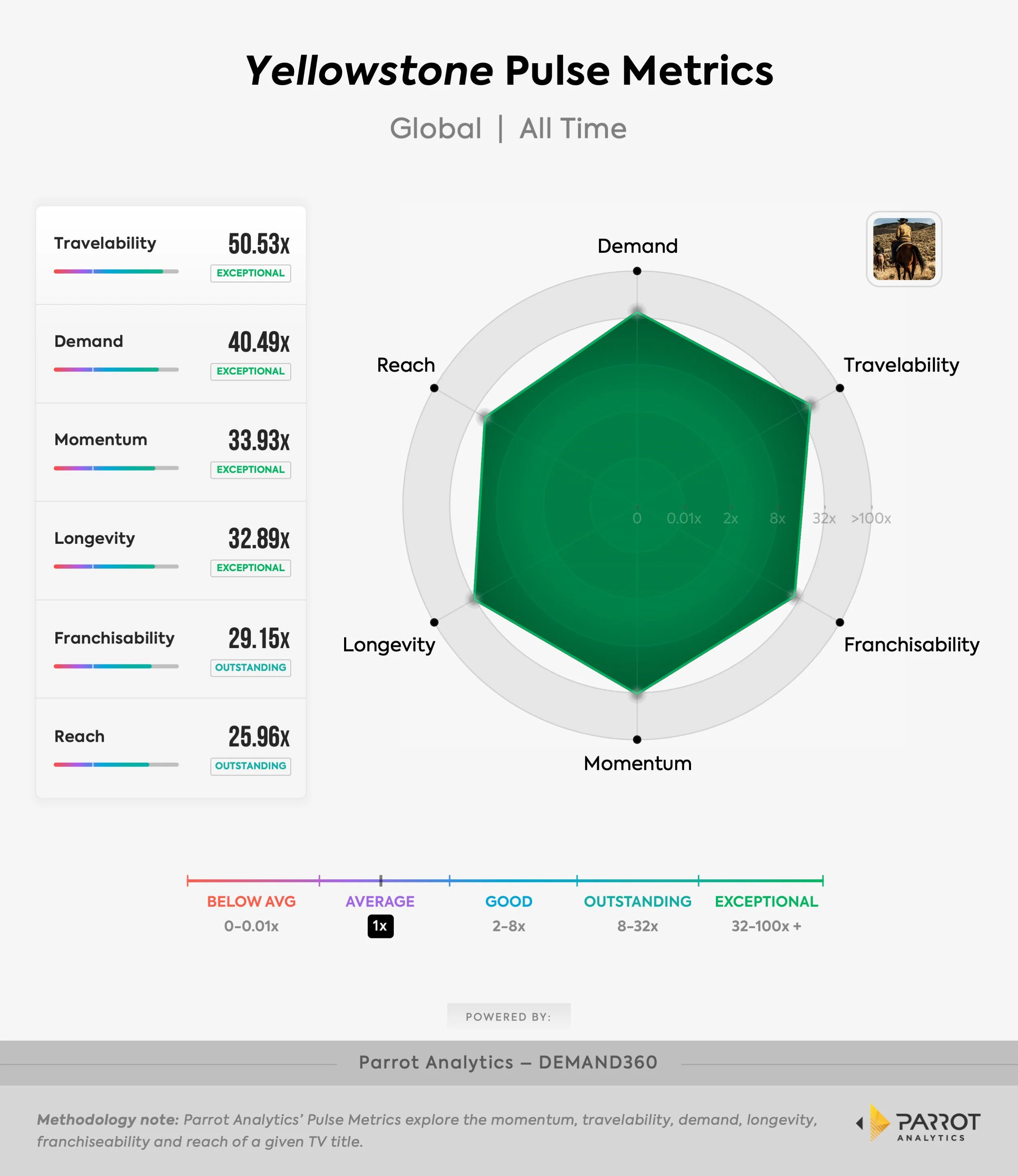New TV Habits Call For New TV Metrics
In every sport, there are any number of ways to create a championship team. Every roster boasts a different set of strengths and skills, which directs overall strategy. In the ongoing NBA Finals, it’s apparent that Dallas Mavericks star Luka Dončić and Boston Celtics star Jayson Tatum possess very different skill sets. Still, the objective across all sports generally remains the same: outscore the opposing team.
A similar dynamic exists in entertainment, particularly in the streaming age. Raw viewership will always be the overarching goal of every film and television series. But in our increasingly digital ecosystems, success isn’t quite as linear as it once was (punmost definitely intended). There are several metrics to consider when evaluating performance today.
Parrot Analytics’ Pulse Metrics are designed to provide deeper insight than top level viewership. These measure:
Demand: Indicates the total TV audience demand expressed for a title across all platforms in a market, compared to the average TV show.
Momentum: Indicates how fast demand for a title grows over the past 12 months compared to the speed of demand growth for the average title.
Travelability: Indicates the popularity of a show outside of its home market.
Longevity: Indicates how well the title’s demand is maintained over time.
Franchiseability: Indicates the spin-off potential for a title.
Reach: Indicates the breadth of a title’s popularity as it represents the total number of unique users expressing demand for a title.
As you can see from the chart below, Yellowstone — the most popular series on cable — performs in the upper-echelon of each of these markers. This helped creator Taylor Sheridan build a growing roster of successful direct spinoffs and spiritually connected series for Paramount+. Peacock has also benefited greatly from hosting Yellowstone on its platform; from January 1, 2020 to present, Yellowstone is one of the 10 most in-demand series available on the service in the US.
Digging even deeper, the calculus of success in today’s multifaceted digital world should also take into account seasonal demand (i.e. decay rate) and audience demographics, acquisition and retention, and revenue contribution. All of these, of course, must be weighed against budget.
For example, Baby Reindeer has peaked as the ninth most in-demand TV series globally while Stranger Things has hit No. 1 overall several times. Naturally, this means the latter is generating more demand and viewership than the former. Yet Baby Reindeer — which has emerged as a slow burn organic word-of-mouth success — costs a fraction of what Stranger Things does to produce, appeals to an older demographic of viewers, and is showing exceptional Momentum and Outstanding Travelability.
There is more than one way to create value for a streaming library today. As the industry continues to evolve, so too must our ability to track and measure contribution and performance.


